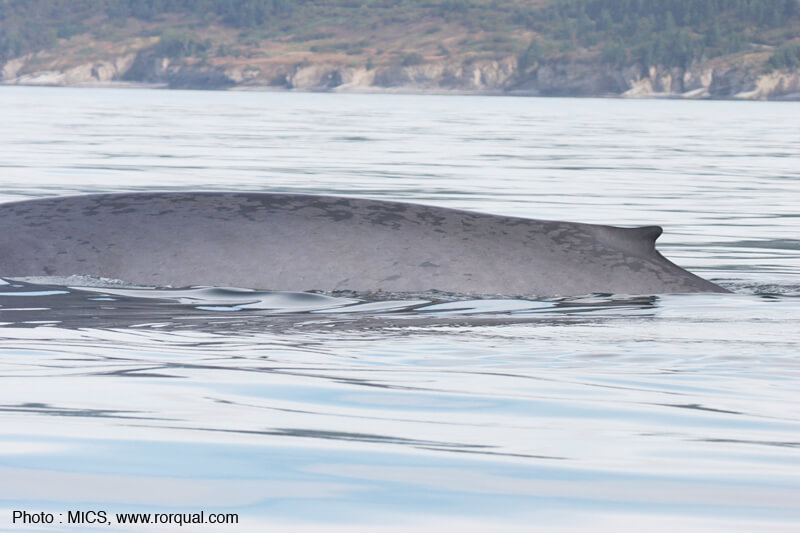Bird of Prey
Blue Whale


-
ID number
B261
-
Sex
Male
-
Year of birth
Unknown
-
Known Since
1991
Distinctive traits
As with all blue whales, Bird of Prey is best recognized by his pigmentation pattern. The Mingan Island Cetacean Study (MICS) gave it his name because of a pigmentation pattern resembling a “Bird of Prey”, a warship in the Star Trek series, on his left flank, just below the dorsal fin.
Life history
Bird of Prey is a rather irregular and nomadic visitor. He was mainly seen in the estuary from 1991 to 1994, in 1999, 2001 and 2011, as well as in the Gaspé region in 2006.
Observations history in the Estuary
Years in which the animal was not observed Years in which the animal was observed
Latest news from the publications Portrait de baleines
More than a dozen years after its last GREMM-confirmed sighting in the estuary, the Bird of Prey blue whale is back in the productive waters of the Laurentian Channel! Since August 31, the largest animal on Earth has been circulating in the area, delighting crowds who have the chance to see its powerful blow from a safe distance. As a reminder, a 2017 study reported that blue whales dive less in the presence of boats within a radius of less than 400 meters. So, to give these giants of the sea every chance of filling their bellies, let’s keep our distance! Known at least since 1991 to the team at the Mingan Island Cetacean Study (MICS), Bird of Prey has been in the estuary a few times, but is said to be a nomadic and irregular visitor.
Like the other marine mammals that frequent the St. Lawrence in summer, Bird of Prey is here to eat. Are blue whales, which can eat up to 16 tonnes of krill a day, a threat to the survival of this small crustacean in the oceans? Quite the contrary! Scientists have studied this phenomenon, known as the “krill paradox”: the more whales that feed, the more krill. The reason? Whale excrement provides excellent nutrients for phytoplankton, on which krill feed!
Since last July 28, the Saguenay-St. Lawrence Marine Park has been host to no less than four blue whales, including Bird of Prey. Bird of Prey is a male that has been known since 1991 to researchers at
Sur le site du MICS, where he also bears the identification code B261.
Bird of Prey, a seemingly irregular and somewhat nomadic visitor, has until now been observed mainly in the Estuary, with sightings in 1991, 1992, 1993, 1994, 1999, 2001 and 2005, as well as in the vicinity of Gaspé in 2006. Further, we should mention that these two sectors are surveyed by transects this year by a team composed of Fisheries and Oceans Canada, MICS and Alaska Sealife Center in the context of the 2nd season of satellite telemetry of blue whales (see Portrait de baleines from last July 21). Will they succeed in placing a satellite tag on this strange bird?
Largest animal of all time, the blue whale is now protected, having become rare due to overhunting which persisted until 1955. To aid its recovery, we must notably avoid getting overly close to this wary behemoth so as not to disturb its next meal, or, if done repeatedly, affecting its health or its ability to reproduce. This measure is part of the : Marine Activities in the Saguenay-St. Lawrence Marine Park Regulations, and members of the Eco-Whale Alliance have undertaken to follow it even outside the Protected Marine Area. A little boost for this mythical whale!
The blue whale consumes a tonne of krill a day and thus feeds nearly continuously when it encounters them. Krill, small planktonic crustaceans, drift with the currents and accumulate in immense clouds in certain favourable zones, including in the Marine Park, which is a particularly rich feeding area.
Not to be missed: the jaws of a blue whale on display at the CIMM in Tadoussac: 6 m, or a quarter of the length of the animal!
